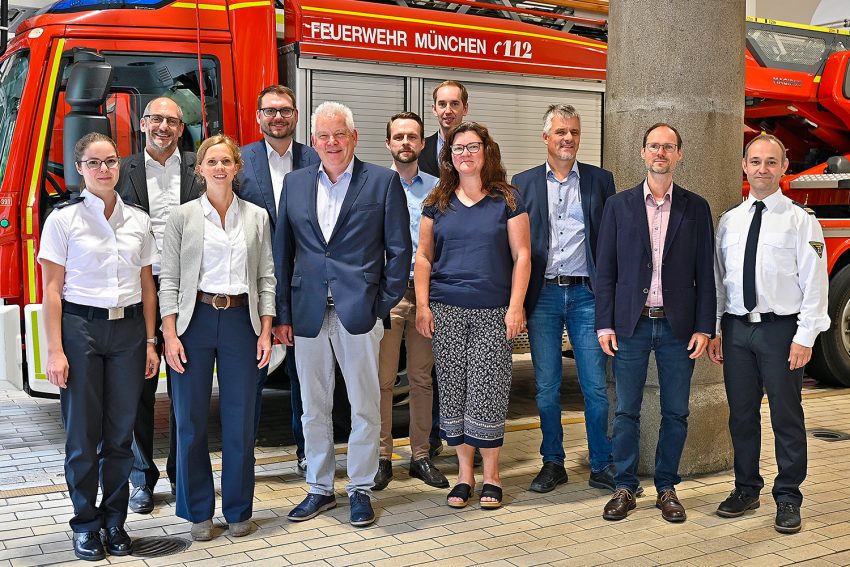Joint project on safe storage of and fire suppression in automotive high-voltage batteries Real fire tests at the Center of Fire Safety Research (ZeBra)
The dangers of electric cars catching fire and how to fight them effectively are well known and already part of everyday life for fire brigades. But how fast does the fire spread, how much heat is released and what does fire-fighting look like for densely stored drive batteries with lithium-ion technology? Real fire tests are being carried out at the Center of Fire Safety Research (ZeBra) at TU Braunschweig. As part of a BMBF-funded joint project with the Munich Fire Department and the Federal Institute for Materials Research and Testing, various fire research questions are being investigated.
The safe storage of automotive high-voltage storage systems consisting of several lithium-ion battery packs has not yet been sufficiently investigated from a research and fire brigade perspective. This raises questions in the production and storage of the high-voltage storage units with regard to fire spread dynamics, possible uncontrollable spreads and also large-scale fire scenarios. This is comparable to the storage of petrol: it is controllable in a car – other solutions are necessary for large tank terminals.

Kick-off meeting for the start of the research project on safe storage of and fire suppression in automotive high-voltage storage systems. (from left) Kristina Steinbauer, Dr. Christian Fenster, Anna Guerrero, Christian Schoschies, Jörn-Bo Hein, Marco Henke, Justus Frenz, Dr. Tanja Stimpel-Lindner, Prof. Jochen Zehfuß, Dr. Christian Kaust und Björn Maiworm. Photo credit: Berufsfeuerwehr München
Real-life tests in the new ZeBra experimental hall
The numerous unanswered questions have led to a research cooperation to investigate the “Controllability of large-scale fires in industrial halls with the hazardous material high-voltage storage and their propagation models – (BEGIN-HVS)”. At the Institute of Building Materials, Concrete Construction and Fire Safety (iBMB) with the newly established Center of Fire Safety Research (ZeBra), the experimental part of the large-scale fire tests will be carried out with up to 16 high-voltage storage units at the same time. The Munich Fire Department is responsible for the project management and the development of the problems for the scenarios to be investigated, a future operational concept and recommendations for fire protection solutions. The Federal Institute for Materials Research and Testing (BAM) is responsible for the fire simulation on an industrial hall scale and the dispersion assessment.
The aim of the joint project is to formulate assistance for firefighting and preventive fire protection. As a result of the research project, recommendations for the storage of lithium-ion high-voltage batteries are to be developed so that any large-scale fires can be prevented with sufficiently safe, economical and use-oriented fire protection solutions.
The large-scale fire tests will start next year at the Center of Fire Safety Research (ZeBra), whose research building with its experimental hall and large-scale research equipment will be opened in autumn. “With its unique experimental facilities, the ZeBra can help find answers to the fire research questions of this collaborative project and thus contribute to the mobility turnaround and city of the future,” says Professor Jochen Zehfuß, head of the iBMB’s Fire Protection Department and spokesperson for the ZeBra.
About the project
The BEGIN-HVS project is funded by the Federal Ministry of Education and Research (BMBF) within the framework of the “Research for Civil Security” programme in the funding measure “Anwender – Innovativ: Forschung für die zivile Sicherheit II” with more than 1 million euros under the funding code 13N16603 and runs from 1 May 2023 to 30 April 2025.
